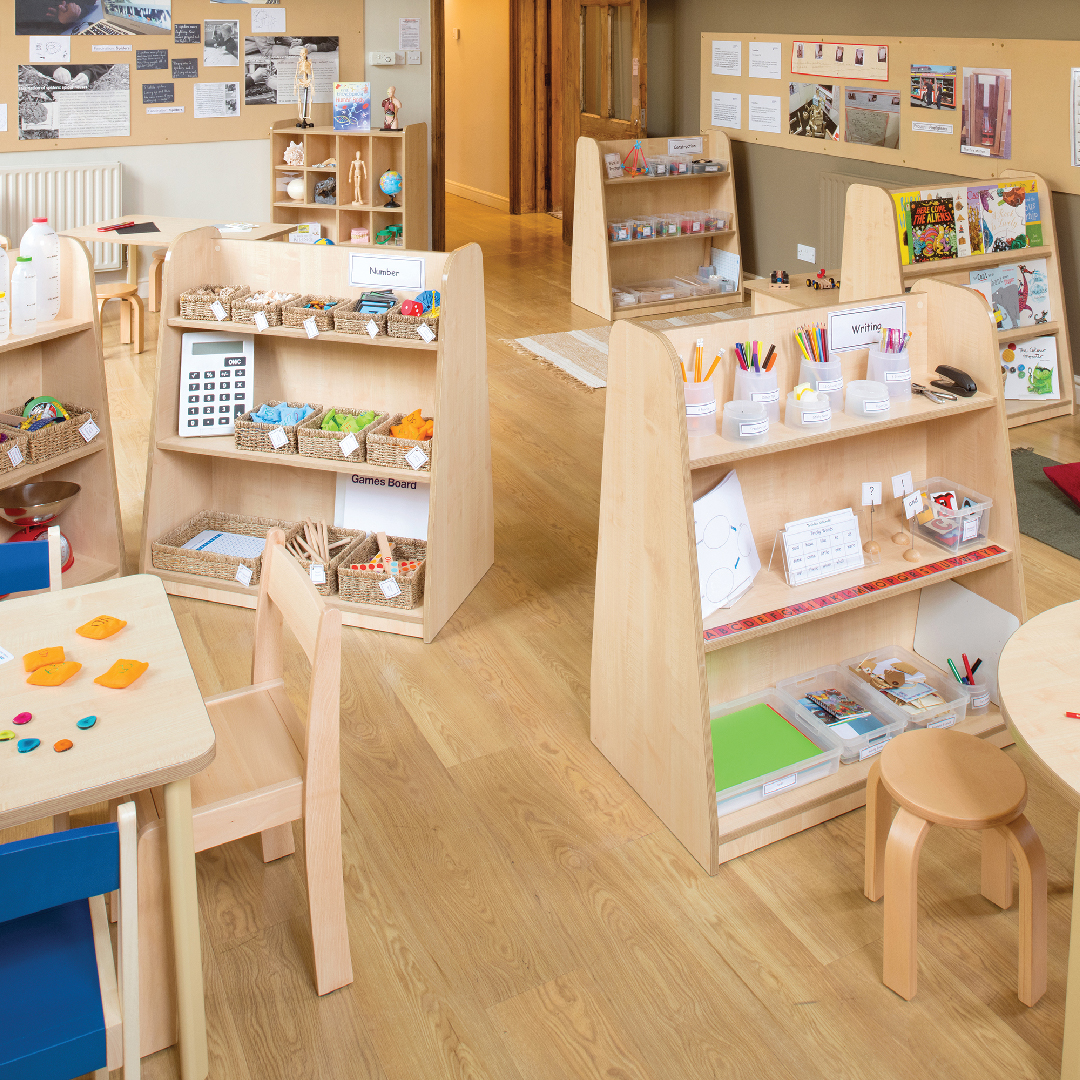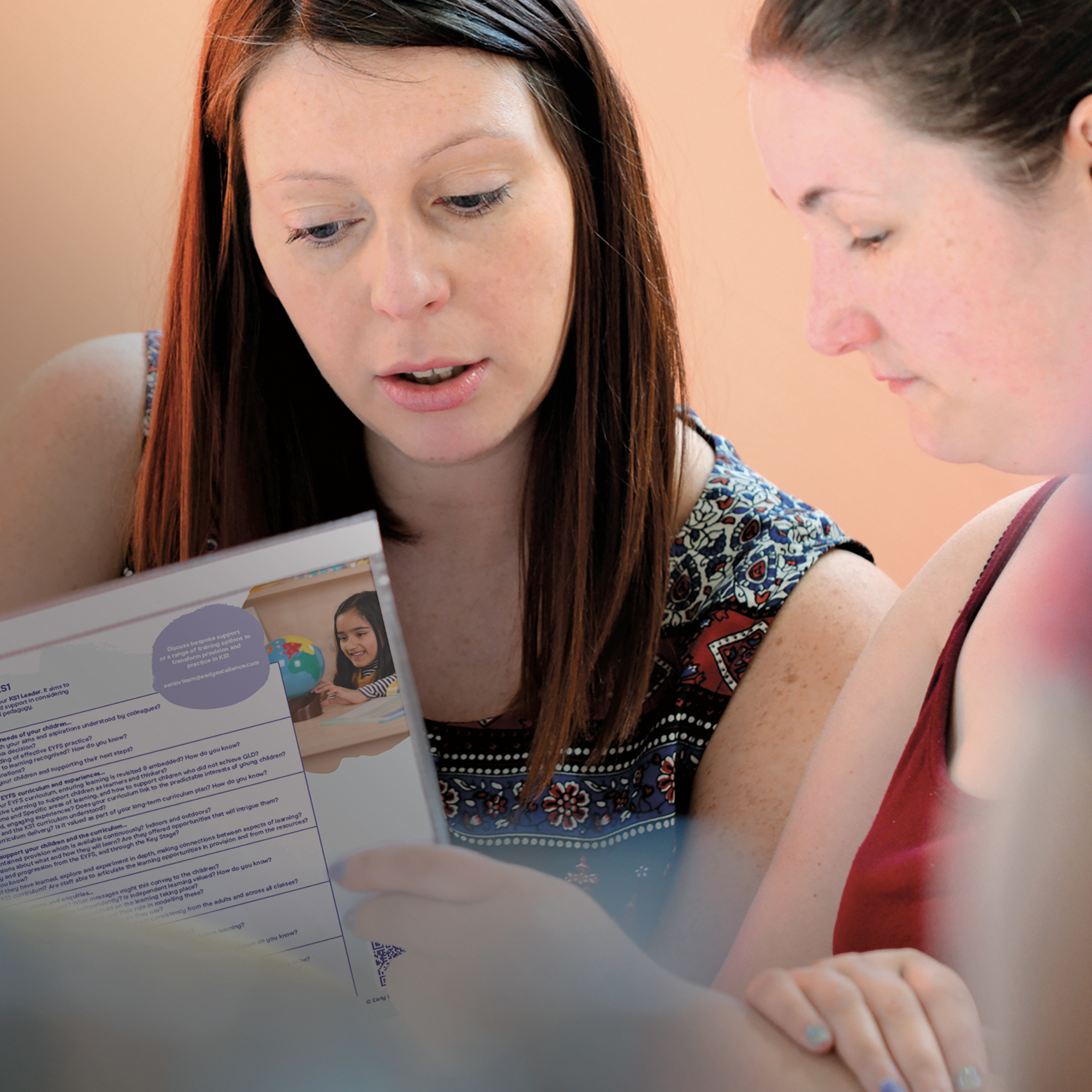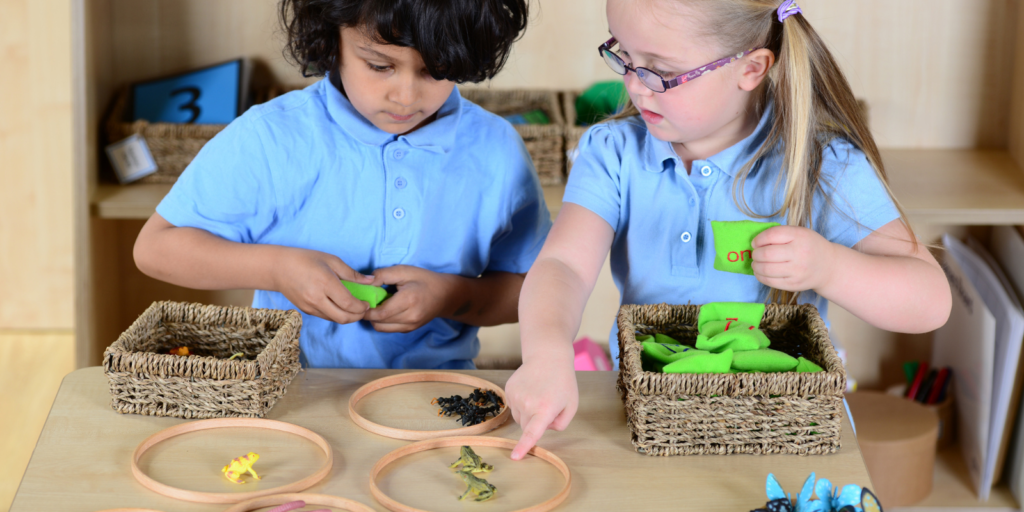Consider the children currently moving towards the end of their time in Reception. The chances are, you will have a group of children confident in their abilities and secure in their environment, who work with enthusiasm, confidence, and high levels of engagement as they independently select the resources they need, using them creatively and with increasing skill. Then consider how the adults in that setting support these learners; how the classroom has been designed, the resources that are constantly available every day and how that day is structured. And now, contrast this with the environment that this same group of children will encounter only a few weeks later in Year 1. This blog looks at how to help children transition to Year 1.
This article is also available as a podcast:
Tackling the Year 1 Transition “Cliff Face”
When we compare the curriculum and practices of the EYFS and Year 1, we are often faced with fundamental differences in both style and content. Learning in the EYFS is active, play-based and hands on, centred around the child and their first-hand experiences. Throughout the EYFS, we celebrate the ‘unique child’ and adults respond to individual needs and interests- learning that is child-led. This is often in stark contrast to the experiences of children in Year 1 where learning is largely (or completely) adult-led. Here, learning focuses on a particular objective often taught to all children at the same time. Learning is much less active and time for play is often confined to set playtimes or as a reward for work completed, a time filler or a short-term approach to transition, soon to be removed when children are ready to sit down for longer.
EYFS settings are designed to be an ‘enabling environment’: clearly defined areas of provision are resourced and organised to ensure maximum engagement and independent access. Year 1 classrooms may be planned around the need to provide each child with a place and a chair with any additional provision often placed at the edge for occasional access. Resources are often stored in cupboards and drawers and are only accessed by or with an adult, when they are required.
And yet, “Developmentally there is very little difference between a Reception child and a Year 1 child. Key changes come around the age of 7.” (Julie Fisher, Moving onto Key Stage 1)
What does the research on child development tell us?
Piaget (1952) describes four distinct periods of development, ranging from birth through to adulthood. The preoperational stage runs from 2 – 6 years and is the period during which children learn to use language, think symbolically, and represent their ideas using pictures and objects: they are highly active, learning through pretend play and first-hand experiences. It is not until around the age of 7 that major developmental changes take place; when children begin to think in the abstract (Bredekamp, 1987), develop the ability to plan ahead, to approach problems more logically and understand another’s point of view (Robinson, 2008). The key questions here then are:
- Is our practice developmentally appropriate;
- Is our pedagogy suited to the children we teach, or does content and coverage come first;
- Does the layout and organisation of our classrooms support both what we want children to learn and the kinds of learners we want them to be?
Continuous Provision in Year 1
Provision in Year 1 can be perceived as low level and lacking in challenge – ‘just play’, and it is true that if we simply aim to repeat the experiences children have had in EYFS or if we view the time children spend in provision as having little value, this may very well be the case. However, when it is well-planned and linked not only to the interests of children but also carefully aligned to the demands of the National Curriculum, Continuous Provision can provide increasingly challenging and valuable learning opportunities throughout both Year 1 (as well as Year 2), enabling children to revisit and embed skills and knowledge, whilst continuing to strengthen the effective learning behaviours they had when they left Reception. Child-led learning in an effective, well-planned Year 1 environment does not take children away from learning but rather supports it: links are made, skills and knowledge revisited and embedded.
Defining Continuous Provision
As in the EYFS, we use the term Continuous Provision to describe the provision areas available to children on a daily basis. Each area contains a core set of resources that children are able to access and use independently with both the resources and the way they are organised remaining largely constant throughout the year. In this way, we can offer children a familiar environment in which they can sustain their interests, practice new skills, make links between different areas of knowledge and develop their ideas over time.
The key principles of continuous provision also remain the same:
- Start with the child – what are they interested in, what will they naturally want to do and learn? Are there key areas of learning that need strengthening or revisiting?
- Prioritise areas of provision according to the space you have available and how effectively you can resource them;
- Create a clearly defined space for each area of continuous provision;
- Make sure that the resources you provide earn their place by providing lots of possibilities for learning;
- Organise resources carefully and make them accessible to the children;
- Consider the way in which you group, display and label the resources to provide opportunities for learning.
Continuous Provision in Year 1 must reflect the long-term expectations we have for our children. What skills and knowledge do we want them to master and, therefore, what equipment and opportunities must we provide? Continuous provision Year 1 is not just an add-on, not just another thing to fit in alongside the curriculum: it is a key element of that curriculum.
Child-led learning is not, of course, enough on its own to ensure progress, nor does it supplant the adult in the classroom: skills and knowledge need to be thoroughly planned and effectively taught. But done well, it provides us with the joy of discovery and achievement, gives a place where children’s interests are truly valued, and individual strengths recognised and celebrated.
Key questions to ask yourself:
- Whose requirements feature most highly in your classroom – the inclinations and interests of the child or the needs of the adult?
- Does your environment allow for active, child-led learning and play?
- Are there opportunities for first hand exploration and creativity?
- Does it allow the children to make independent choices – what, where and how they will learn?

Deepen your knowledge of continuous provision and explore the connection with the KS1 curriculum and explore our Rethinking the Learning Environment in KS1 course.

Shop our KS1 resources or invest in a complete solution to rapidly resource your KS1 classrooms when you invest in our Complete Classroom Area Set 5-7yrs.

Enhance discussions, reflection, and strategic planning between EYFS & KS1 Leads to strengthen transition approaches with our School Leader Reflection Tool: Strengthening Transition for All, Continuing the Learning Journey.

